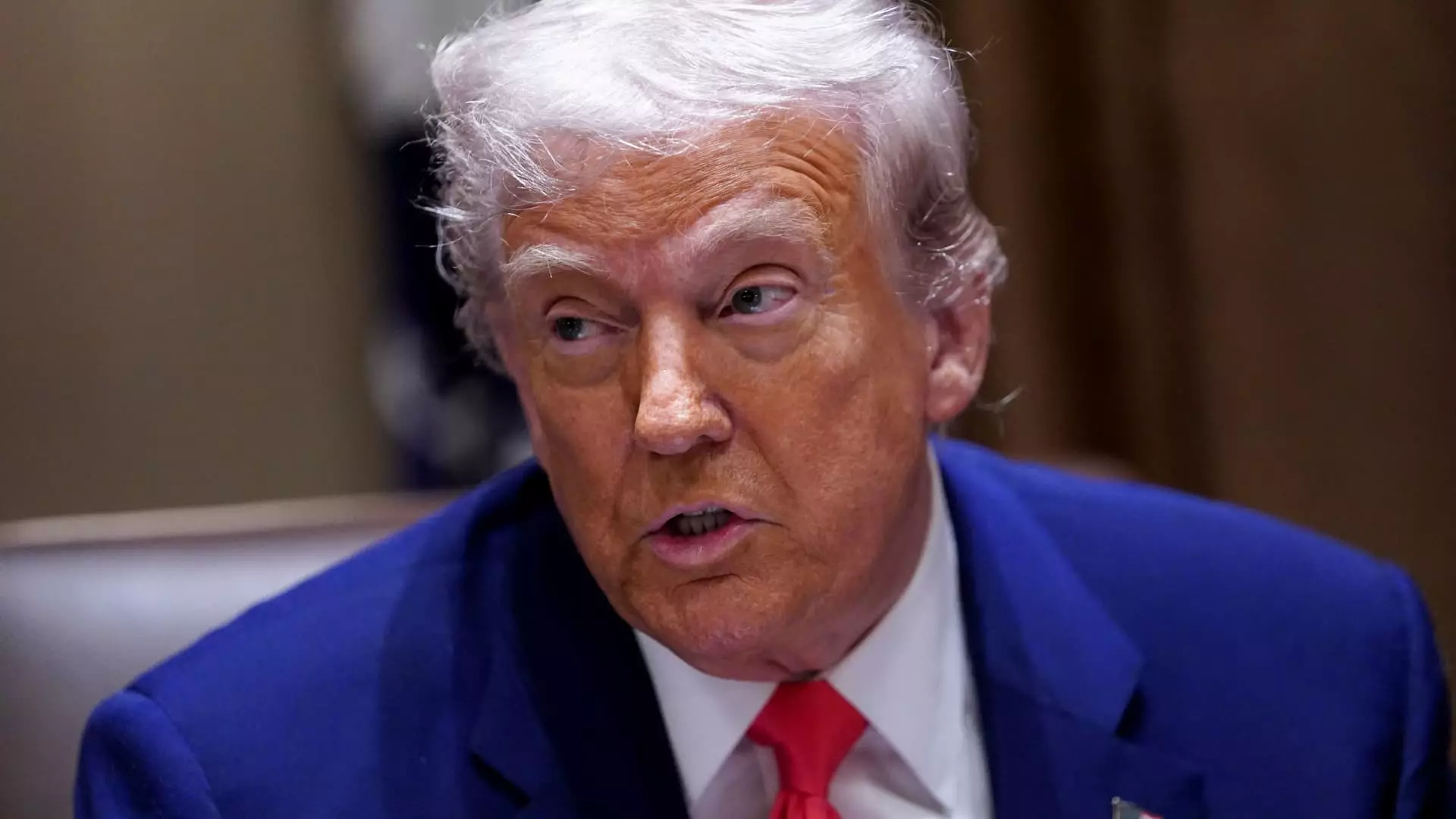The recent escalation of tariffs imposed by President Donald Trump on Chinese imports has drawn substantial criticism and concern from economists and political commentators alike. A staggering 145% tariff rate seems to signal a drastic departure from traditional trade practices, igniting fears of an impending economic catastrophe. The implications for U.S. consumers and businesses are profound, as these tariffs could effectively choke off trade with one of the country’s largest trading partners.
Erica York, an economist from the Tax Foundation, succinctly captured the potential fallout on a recent CNBC segment. She asserted, “If you get north of a triple-digit tariff, you are cutting off most trade.” This statement rings particularly true when considering the broader context of Trump’s trade policies, which seem less about promoting fair competition and more about crafting an insular economic environment that could stifle innovation and strain relationships. The absence of clarity—something York emphasized—leaves markets in a precarious situation, underscoring the need for a balanced and rational approach to trade.
The Market’s Volatility and Consumer Impact
In the immediate aftermath of the tariff announcement, the stock market reacted negatively, erasing substantial gains from previous days. The anxiety investors feel is palpable; this sentiment isn’t merely a reflection of numbers on a graph, but a deep-rooted understanding of what tariffs signify: higher costs for businesses that will eventually trickle down to everyday consumers. As production costs rise, so too will the prices of goods—a phenomenon that seems counterproductive to an administration that claims to champion the middle class.
Take, for example, the implications for everyday materials and products. A plethora of items that might not have market substitutes will still be available, but at what cost? Production companies may find themselves forced to absorb the costs or pass them along to consumers, raising prices across the board. This is a classic case of “tariff-induced inflation”; where the government’s protective measures inadvertently penalize the very citizens they intend to support.
Trump’s Misguided Protectionism
The penchant for protectionism exhibited by this administration has been criticized not just for its potential economic consequences but also for the ideological contradictions it represents. During a Cabinet meeting, Trump mentioned the possibility of extending a 90-day reprieve on tariff rates, a strategy that seems to lack a coherent long-term vision. This piecemeal, reactionary approach is indicative of a failure in policy-making, relying on short-term fixes rather than sustainable economic strategies.
There is a distinct irony in seeking protectionist policies while simultaneously claiming to prioritize growth. The undeniable fact is that heavy tariffs elevate the average tariff rate to heights unseen since the 1940s. This does not just compromise the competitiveness of American goods abroad; it also places U.S. products at risk on domestic shores. As York articulates, the resultant cost increases can stifle growth, suggesting that recent moves might be setting America on an unwise trajectory.
Revenue vs. Economic Health: A False Dichotomy
While the Tax Foundation estimates that Trump’s tariffs could contribute $171.6 billion in federal revenue—marking the population’s largest tax increase since the Clinton era—the question must be asked: at what cost? This revenue generation should not come at the expense of consumer welfare and long-term economic health. An increase in federal revenue deriving from tariffs is inherently contradictory, as it births a heavy burden on consumers, potentially derailing the very economic growth that could provide sustainable funding for public initiatives.
China’s response—raising its retaliatory tariffs on U.S. imports—is a stark illustration of a potential trade war’s real ramifications. The Chinese government has signaled its unwillingness to capitulate under trade pressure, indicating that a tit-for-tat dynamic may be in play. As both nations engage in unproductive escalation, the stakes are heightened, and the resultant consequences grow increasingly dire.
In this electoral climate, the plight of the American consumer remains overshadowed by heavy-handed governmental actions. A more thoughtful trade policy is essential—one that recognizes the interconnected nature of global economies. Without a paradigm shift in how trade policy is conceived and executed, the looming disaster of these exorbitant tariffs will become inevitable.

Leave a Reply